Australian Tropical Rainforest Plants - Online edition
Ichnocarpus frutescens (L.) W.T.Aiton
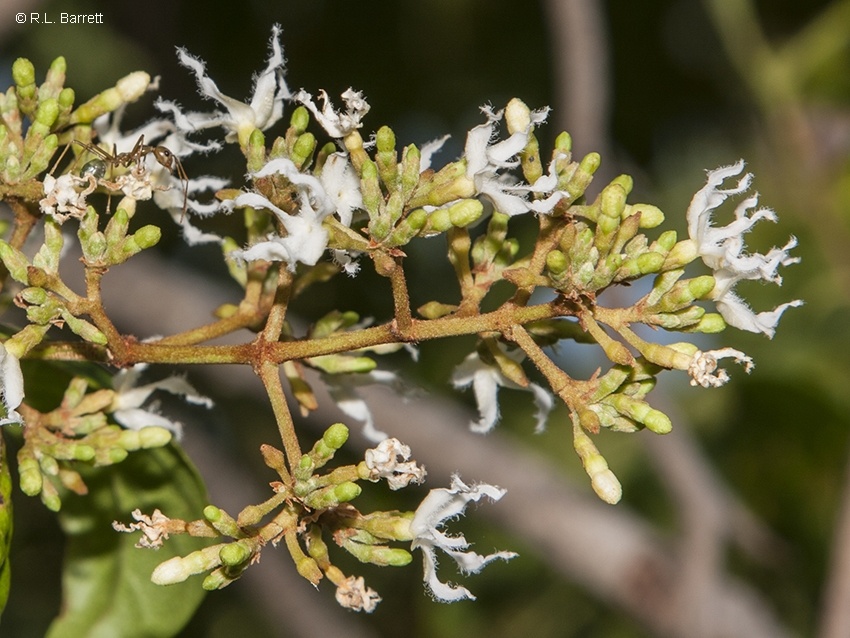



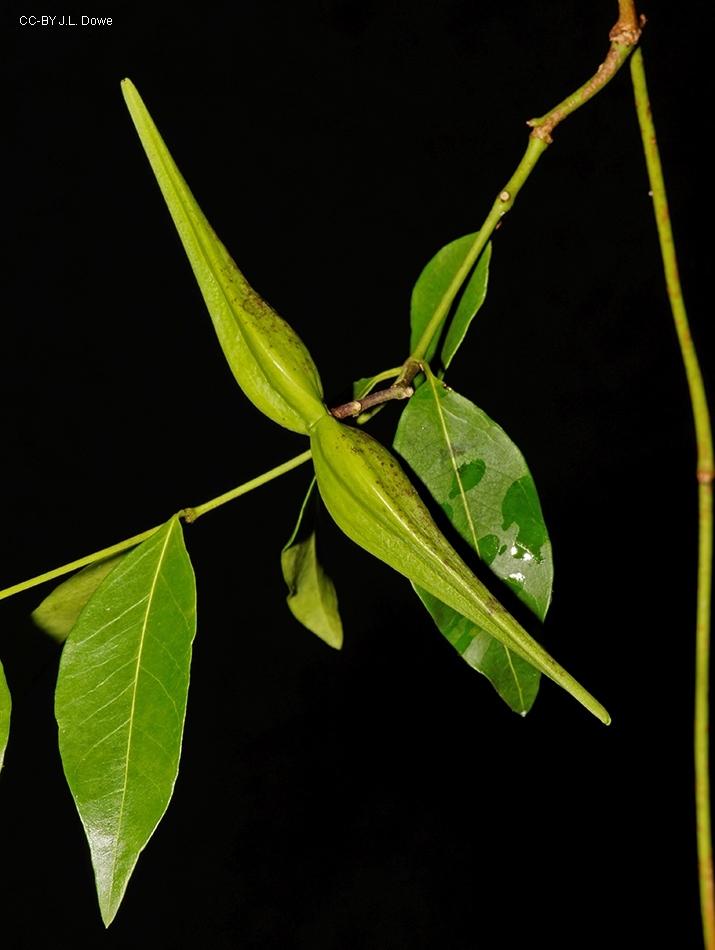



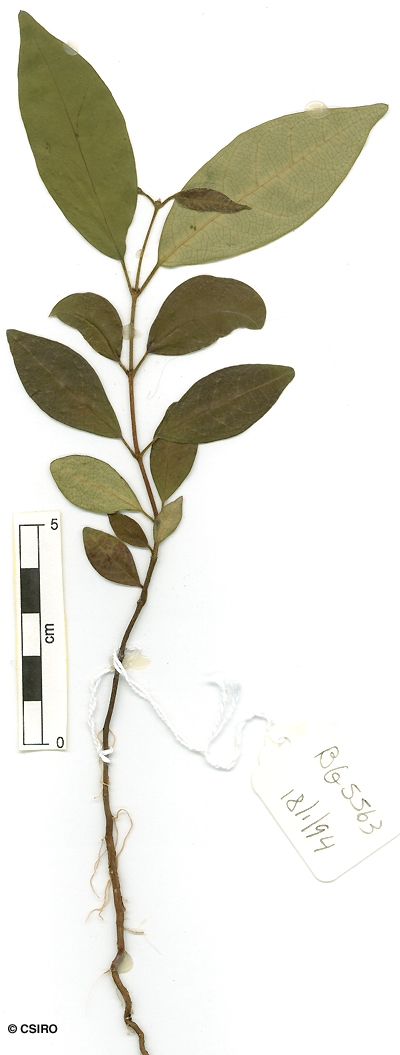
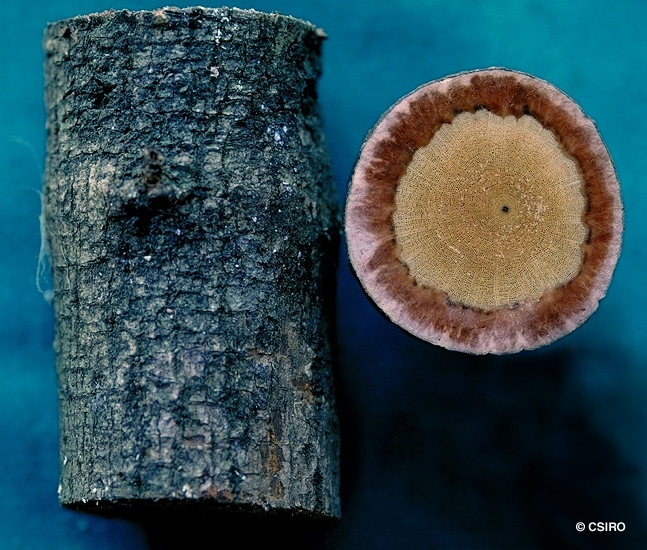
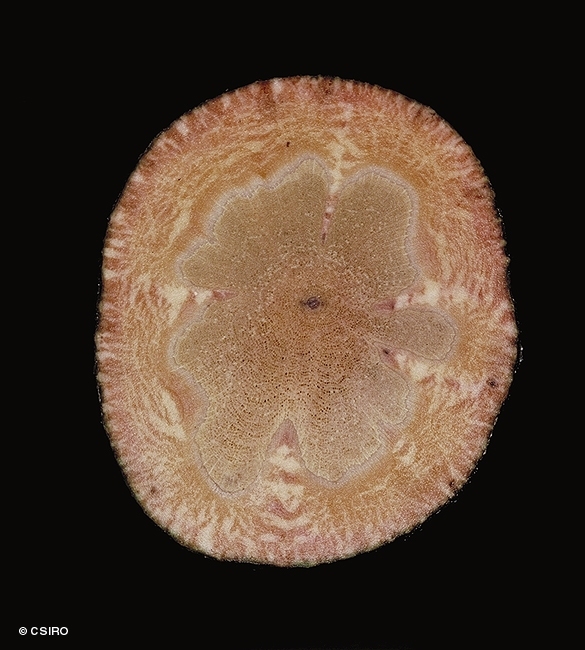
Aiton, W.T. (1811) Hortus Kewensis 2: 69.
Vine stem diameters to 6 cm recorded. Bark exudate copious, cream in colour turning somewhat yellowish on exposure. Sapwood surface corrugated. White granular stripes usually visible in the blaze.
Leaves, twigs and petioles produce a milky exudate. Several small, reddish, stipule-like glands about 0.3 mm long present on the stem between the petioles. Leaf blades about 6-10.5 x 2-4.5 cm, petioles about 0.7-1.3 cm long. Lateral veins six to eight on each side of the midrib.
Fruits consisting of two follicles each about 6.5-14.5 cm long. Seeds about 2 cm long with an attached plume of hairs about 3 cm long. Cotyledons almost as long as the seed, radicle about 1 mm long.
First pair of true leaves ovate to elliptic, apex apiculate, margin ciliate, lower surface sparsely hairy along the midrib. Stem clothed in short, pale erect hairs. At the tenth leaf stage: leaf blade ovate to elliptic, about 4.5-6.5 x 1.8-2.5 cm, mostly glabrous except for scattered hairs on the margins, apex acuminate, base obtuse. Stipules small, less than 1 mm long. All plant parts produce a milky exudate when cut or broken. Glands or stipules present on the stem between the opposing pair of petiole bases. Seed germination time 21 to 42 days.
The reddish or purple roots are the part regarded as medicinal in India. Cribb (1981).





